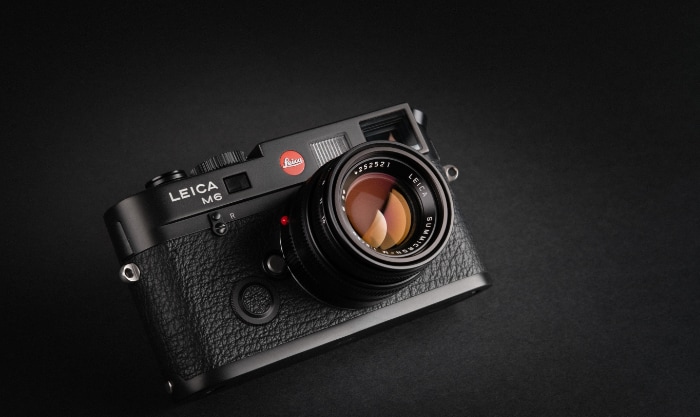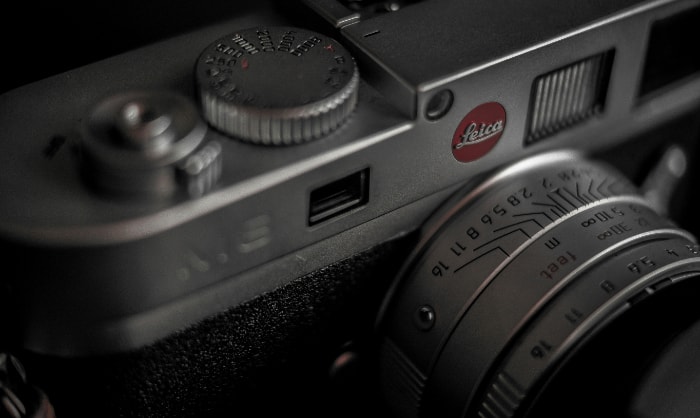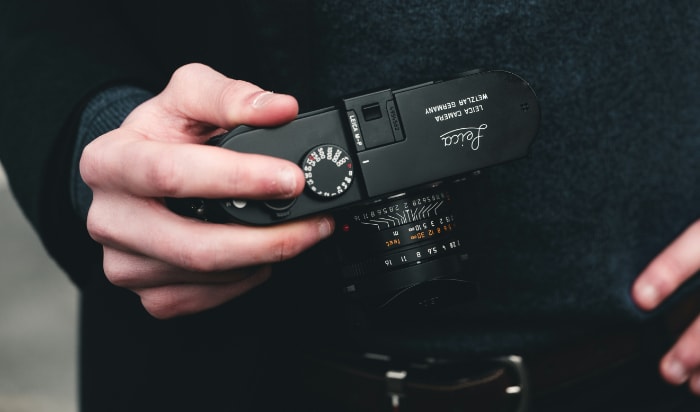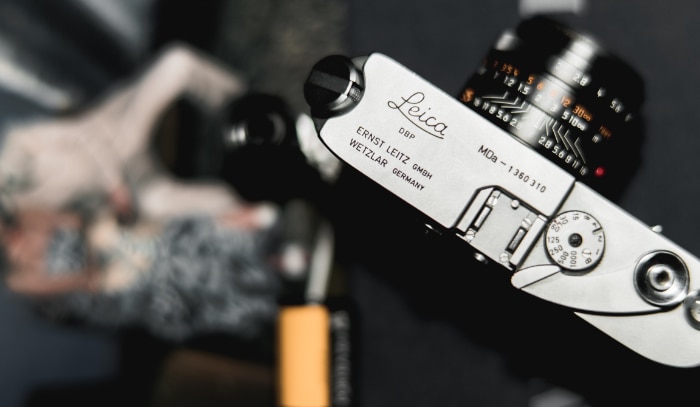The Reasons Why Leica Cameras Are So Expensive

Leica cameras hold a unique spot in the world of photography, synonymous with luxury, quality, and a certain timeless charm. These cameras are not just tools for capturing images; they are often considered works of art, blending aesthetic beauty with technical finesse.
But this prestige and quality come with a price tag that often raises eyebrows. Why are Leica cameras so expensive? Is it just the brand name, or is there more beneath the surface?
Historical Significance
Leica’s journey in the world of photography is not just about a brand; it’s a saga that has shaped the art of capturing moments. Known for its rich history and pioneering achievements, Leica has established itself as a legend in the photographic field.
Leica’s Legacy in Photography
Leica is more than a camera manufacturer; it’s a historical innovator in the field. The company’s roots trace back to the early 20th century, marking significant milestones in photographic technology.
It was Leica that introduced the first practical 35mm camera, transforming photography from a pursuit for professionals and dedicated hobbyists to something accessible for the masses. This move not only revolutionized the way we capture images but also influenced the development of photojournalism and candid photography.
Iconic Models and Market Impact
Throughout its history, Leica has produced cameras that have become icons in their own right. Models like the Leica II with its rangefinder and interchangeable lenses, or the M3, which set new benchmarks for mechanical precision and image quality, have not just been products; they’ve been trendsetters.
The innovation and design of these models have significantly influenced the camera market. Collectors and enthusiasts highly seek after these vintage models, and they often fetch high prices, reflecting Leica’s enduring value and appeal.
Leica’s Contribution to the Arts and Culture
Leica’s impact extends beyond the technical aspects of photography. The brand has been a constant companion for famous photographers, capturing defining moments of the 20th century.
The cameras have been instrumental in documenting historical events, contributing to the world of art, and shaping visual culture. This deep entwinement with history and culture adds to the allure and perceived value of Leica cameras, making them not just tools for photography but also symbols of a rich artistic legacy.
Craftsmanship and Quality
Leica’s reputation is deeply rooted in the exceptional craftsmanship and quality of its cameras. These traits are not just buzzwords for the brand; they are the pillars on which Leica has built its legacy.
Uncompromising attention to detail and a dedication to precision are what set Leica cameras apart in a world where mass production is the norm.
Precision Engineering and Manufacturing
At the heart of Leica’s craftsmanship is precision engineering. Each camera is a result of meticulous design and assembly, often involving hand-crafting processes.
Unlike mass-produced cameras, Leica’s approach to manufacturing is more akin to watchmaking. From the smallest screw to the complex lens systems, every component is produced and assembled with extreme precision.
This method ensures unparalleled quality but also requires a significant amount of time and skill, factors which contribute to the higher costs.
Material Quality and Durability
Leica’s choice of materials is another aspect that elevates its cameras to a higher standard. High-grade metals, superior quality glass for lenses, and robust mechanical parts are standard in Leica’s production line.
These materials are not only chosen for their aesthetic appeal but also for their durability and ability to enhance camera performance. The result is a camera that not only looks and feels premium but also withstands the test of time, often outlasting its counterparts.
Handcrafted Aesthetic Appeal
Leica cameras are celebrated for their aesthetic appeal, which goes hand in hand with their functionality. The attention to detail in design – from the texture of the camera body to the smoothness of the dials – adds to the tactile experience of using a Leica.
This blend of form and function is rare and requires a level of handcrafting that is increasingly uncommon in today’s automated world. The aesthetic appeal, combined with the functional excellence, contributes significantly to the cost of these cameras.
Quality Control and Testing
Before a Leica camera makes its way to a customer, it undergoes rigorous quality control and testing. Each camera is inspected, and its performance is tested to ensure it meets the high standards set by the company.
This process includes checking the mechanical functions, testing the optical performance, and ensuring the camera’s reliability under various conditions. Such exhaustive testing is integral to maintaining the brand’s reputation for quality but also adds to the production cost.
Technological Innovation

Leica’s name is often synonymous with pioneering advancements in the world of photography. The brand’s commitment to technological innovation is a significant factor behind its premium pricing.
From introducing groundbreaking features to refining existing technologies, Leica’s pursuit of excellence is evident in its product lineup.
Groundbreaking Features in Camera Technology
Leica has a history of introducing features that have reshaped the photography landscape. For instance, their rangefinder system, renowned for its accuracy in focusing, was a game-changer in the camera industry.
Leica’s digital models continue this trend, incorporating advanced imaging sensors and processing technology that ensure outstanding image quality. These innovations are not only about adding new features but also about enhancing the photographer’s experience and the quality of the final image.
Focus on Optics and Lens Quality
A significant aspect of Leica’s technological prowess lies in its lens technology. Leica lenses are celebrated for their sharpness, contrast, and color fidelity.
The company invests heavily in research and development to create lenses that capture images with exceptional clarity and detail. This focus on high-quality optics is a core reason for the high cost of Leica cameras.
Superior lenses require precise engineering, high-quality materials, and extensive testing, all of which add to the overall expense.
Integration of Modern Features with Classic Design
While embracing modern technology, Leica has managed to retain the classic aesthetic and manual controls that many photographers cherish. This integration of contemporary features with a traditional design ethos is a delicate balance that few brands manage to achieve.
It involves continuous innovation to ensure that new technologies blend seamlessly with the mechanical precision and ergonomic design that Leica cameras are known for.
Customization and Software Development
Leica’s approach to software and customization is another area where innovation plays a key role. The company’s software solutions are designed to complement the hardware, enhancing the camera’s capabilities and user experience.
Additionally, Leica often provides customization options, allowing users to tailor their cameras to specific needs. This level of customization requires ongoing technological development and contributes to the high cost of the cameras.
Sustainability of Technological Advancements
Leica’s investment in technology is not just about the immediate benefits. The brand focuses on creating sustainable and enduring advancements.
This means developing technologies that stand the test of time and continue to provide value to photographers in the long run. Such a sustainable approach to innovation ensures that Leica cameras remain relevant and sought-after, even as new models and technologies emerge in the market.
Brand Prestige and Market Position
Leica’s stature in the camera industry goes beyond just the physical products it creates; the brand itself carries a prestige that significantly influences its pricing. Leica’s position in the market is unique, appealing to a specific segment of photography enthusiasts and professionals.
The Role of Brand Identity in Pricing
Leica’s brand identity is intertwined with notions of luxury, exclusivity, and top-tier quality. Over the years, the company has built a reputation that resonates with a sense of history, craftsmanship, and artistic expression.
This strong brand identity allows Leica to command higher prices. It’s not just about paying for a camera; it’s about owning a piece of a storied legacy, which many photography enthusiasts and professionals find valuable.
Leica’s Niche Market and Customer Base
Leica doesn’t aim to cater to the mass market. Instead, it targets a niche audience who appreciates the finer aspects of photography and is willing to invest in a high-end product.
This audience includes professional photographers, photography enthusiasts, collectors, and those who value the blend of art and technology. By focusing on this specific market segment, Leica maintains its status as a premium brand, a factor that justifies its higher pricing.
Comparison with Other Luxury Brands
Similar to high-end brands in other industries, such as luxury watches or designer fashion, Leica’s pricing reflects its position as a luxury item. The comparison with other luxury brands helps in understanding why people are willing to pay a premium for Leica cameras.
Just as some people are drawn to luxury cars or designer clothes for their quality and status symbol, Leica attracts a clientele that sees value in owning a premium camera brand.
Marketing and Branding Strategies
Leica’s marketing and branding strategies also contribute to its high-end positioning. The company’s advertising, collaborations, and presence in high-profile events reinforce its image as a luxury brand.
These marketing efforts are designed to create and maintain a high perceived value, which in turn supports the brand’s premium pricing strategy.
The Impact of Brand Loyalty
Brand loyalty plays a significant role in Leica’s market position. Many Leica users are fiercely loyal to the brand, often citing the camera’s quality, performance, and the satisfaction of using a Leica as reasons for their loyalty.
This strong brand loyalty not only helps sustain high prices but also fosters a community of users who appreciate the brand’s heritage and the unique experience of using its cameras.
Performance and Image Quality

When it comes to Leica cameras, their performance and the quality of images they produce are often highlighted as justifications for their high price. Renowned for capturing stunning visuals with a unique aesthetic, Leica cameras stand out in a saturated market.
Superior Image Quality
Leica cameras are celebrated for their exceptional image quality. This is largely attributed to the combination of high-quality sensors, excellent lenses, and meticulous engineering.
Images captured by Leica cameras are known for their sharpness, color accuracy, and distinct rendering of details. This level of image quality is a result of Leica’s commitment to using premium components and its rigorous testing processes, factors that contribute to the overall cost of the cameras.
The Leica Look
The ‘Leica Look’ is a term often used by photographers to describe the unique visual appeal of images taken with Leica cameras. This look is characterized by a certain warmth, depth, and texture that is difficult to replicate with other brands.
It’s a combination of the technical aspects of the camera and the artistic heritage of the Leica brand. This unique aesthetic appeal is highly valued by photographers and enthusiasts, adding to Leica’s allure and justifying its premium pricing.
Performance in Various Conditions
Leica cameras are designed to perform exceptionally well in a variety of shooting conditions. Whether it’s low light photography or capturing fast-moving subjects, Leica cameras maintain a high level of performance.
This versatility is crucial for professional photographers and serious enthusiasts who require reliable equipment that can adapt to different scenarios. The ability to perform consistently across various conditions is a testament to Leica’s engineering and design expertise.
User Experience and Handling
The performance of a Leica camera is not just about the technical aspects; it’s also about the user experience. Leica cameras are designed with an emphasis on ergonomics and user-friendly interfaces.
The tactile experience of using a Leica, from the smoothness of its dials to the comfort of its grip, plays a significant role in its overall performance. This attention to the user experience enhances the process of photography, making it more intuitive and enjoyable, and is a key factor in the brand’s pricing strategy.
Longevity and Future-Proofing
Leica cameras are not only built for current performance but are also designed with longevity in mind. The brand ensures that its cameras remain relevant and high-performing even as technology evolves.
This future-proofing approach means that a Leica camera is an investment that retains its value and functionality over time, an important consideration for photographers when justifying the high cost of these cameras.
Limited Production and Exclusivity

Leica’s approach to production significantly differs from that of mainstream camera manufacturers. The brand’s focus on limited production and exclusivity is a key factor behind its high pricing.
This approach not only ensures quality and craftsmanship but also adds to the brand’s allure among photography enthusiasts and collectors.
The Philosophy of Limited Production
Unlike companies that mass-produce cameras, Leica opts for a more controlled production approach. This limited production philosophy aligns with the brand’s focus on craftsmanship and quality.
Each camera is produced with a high level of attention to detail, which is challenging to maintain in large-scale production. The limited number of units produced also creates an aura of exclusivity, making each Leica camera more of a collector’s item than just a photographic tool.
Impact of Exclusivity on Brand Perception
Exclusivity plays a significant role in Leica’s brand perception. Owning a Leica camera is seen as owning a piece of exclusive art.
This perception is cultivated through limited edition models, special collaborations, and unique design elements that are not widely available. Such exclusivity appeals to a niche market of photographers and collectors who value uniqueness and rarity, and are willing to pay a premium for it.
Customization and Special Editions
Leica often releases special editions and customized versions of its cameras. These models, often produced in very limited quantities, feature unique designs, finishes, or collaborations with artists and designers.
Such editions are highly sought after and command even higher prices due to their rarity and unique features. These special editions not only cater to the demands of collectors but also reinforce the brand’s image as a luxury and exclusive manufacturer.
Demand and Supply Dynamics
The limited production strategy naturally impacts the demand and supply dynamics. With fewer units available, the demand for Leica cameras often exceeds the supply.
This imbalance can drive up the prices, especially in the secondary market where discontinued or rare models become even more valuable. The limited availability also means that new models are often awaited with anticipation, further adding to the brand’s prestige and the willingness of customers to pay high prices.
Conclusion
Leica cameras, with their rich history, exceptional craftsmanship, and cutting-edge technology, stand out as more than just photographic tools. They are symbols of a legacy in photography, blending art and precision engineering.
This unique combination of factors contributes to their high cost. From the meticulous manufacturing process and the use of premium materials to the pursuit of technological excellence and a strong brand identity, each aspect plays a role in justifying the price tag.
The limited production and exclusivity of Leica cameras add to their allure, making them not only instruments for capturing images but also items of luxury and collectors’ pride. For enthusiasts and professionals alike, owning a Leica is about experiencing the culmination of over a century’s worth of photographic innovation and heritage.
While the high cost may place these cameras beyond the reach of the average consumer, for those who invest in a Leica, it’s an acquisition that transcends mere photography, entering the realm of a rich, artistic tradition.



